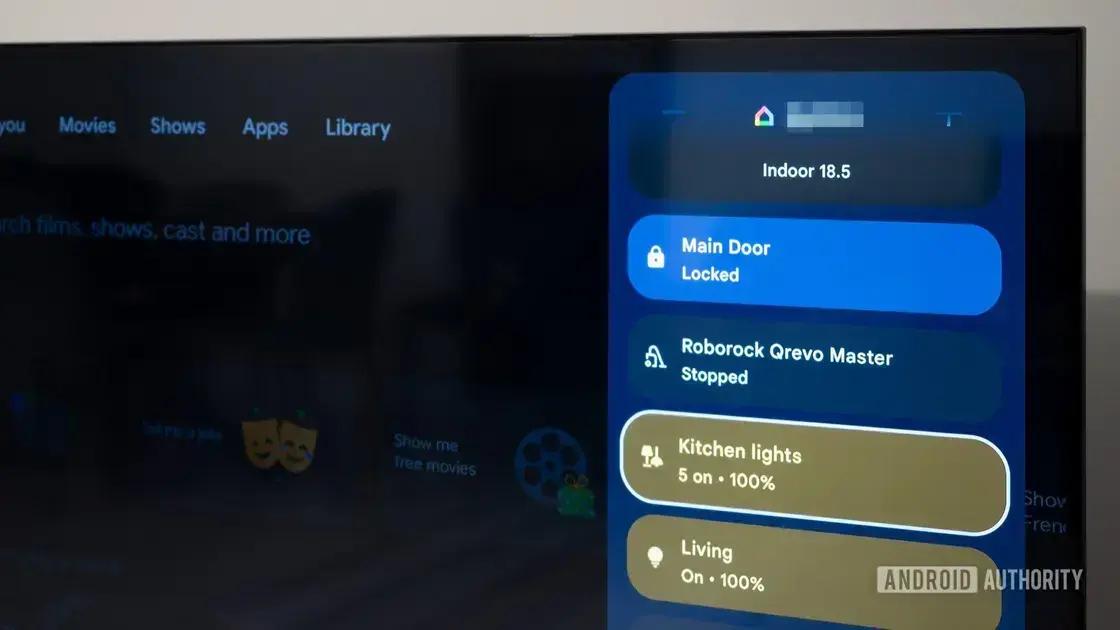Google and MediaTek Partner on New Connectivity Chipset for Smart Home Devices
Google recently integrated the Google Home panel into smart TVs and Google TV devices, simplifying smart home device control. Now, they’ve partnered with MediaTek to launch the Filogic MT7903 connectivity chipset, designed specifically for the Google Home ecosystem. This new connectivity chipset emphasizes support for Matter and Thread, two crucial standards for smart home interoperability. Samples of the MT7903 will be available in the first half of 2025. This partnership aims to improve the performance and reliability of connected devices within the Google Home environment. Interested in smart home tech? Check out some of the latest innovations at CES 2025.
Enhanced Connectivity Chipset: Powering the Google Home Ecosystem
The Filogic MT7903 connectivity chipset signifies Google’s commitment to seamless integration within its smart home ecosystem. Working with MediaTek, a leader in chipset technology, allows Google to enhance the user experience for those invested in Google Home.
This new connectivity chipset prioritizes Matter and Thread, protocols designed to create a unified and reliable smart home experience. By incorporating these standards, the MT7903 helps ensure devices from various manufacturers can communicate effectively.
The connectivity chipset’s design addresses a key challenge in the smart home market: fragmentation. Different devices often use different communication protocols, making it difficult for them to interact. The MT7903 will streamline this for Google Home users.
This development aligns with Google’s broader efforts in the smart home arena. They’re actively involved in building a more interconnected future for homes, as showcased by their latest line of connected home devices. The MT7903 represents a significant step forward in that journey.
Connectivity Chipset: Bridging the Gap Between Devices with Matter and Thread
The introduction of the Filogic MT7903 connectivity chipset underscores the importance of Matter and Thread in the evolving landscape of smart homes. These technologies offer a way to standardize communication between devices, regardless of brand. For users, this means easier setup, improved reliability, and expanded compatibility across their smart home gadgets.
The Filogic MT7903 connectivity chipset’s support for these standards directly benefits consumers. It simplifies the process of adding new devices to the Google Home ecosystem. No more wrestling with complicated pairing processes or worrying about compatibility issues.
Thread, a low-power mesh networking technology, enhances the range and responsiveness of smart home networks. The MT7903, by supporting Thread, contributes to a more robust and reliable connection between devices. Looking for other devices designed for performance? Explore the ASUS ROG Flow Z13.
Matter and Thread are gaining traction as essential technologies for the future of smart homes. The MT7903 positions Google and MediaTek at the forefront of this trend, ensuring a smooth transition for Google Home users. With seamless wireless connectivity increasingly important, explore Qualcomm’s latest advancements in their Snapdragon X processor.
Connectivity Chipset: A Look Ahead
With the MT7903 connectivity chipset sampling in the first half of 2025, the collaboration between Google and MediaTek sets the stage for what could be a new era in smart home technology. It promises to not only enhance current Google Home functionality but also pave the way for more advanced features and device compatibility in the future. For those looking to stay ahead of the tech curve, the Galaxy S25 promises to be a leader in connected experiences.
Consumers can anticipate broader product support and easier integration for their smart home systems. The Filogic MT7903 connectivity chipset isn’t just an incremental update; it’s a fundamental shift towards a more unified smart home. This move could potentially influence other industry players to embrace Matter and Thread more actively.
The MT7903 represents more than just improved connectivity. It opens doors for developers to create innovative and seamless experiences for the Google Home platform. With a unified connectivity standard, developers can focus on creativity and functionality rather than compatibility issues.
The introduction of this connectivity chipset marks a significant step towards a more cohesive smart home experience, particularly for those within the Google Home ecosystem. As the smart home landscape continues to evolve, this partnership between Google and MediaTek will likely play a crucial role in shaping its future.


